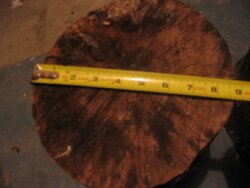- May 19, 2007
- 149
I will be ordering my new stove this week (caliente chilli sunset red, I believe "whorehouse" red was already taken), Pacific Energy Summit classic. I have an abundance of ponderosa pine logs and rounds that have been lying around for nearly three years and are EXTREMELY dry. Since pine burns so fast anyway, should I possibly consider not splitting up the rounds and just burn the logs round?.
My thinking is that since these logs are so dry (kiln dry moisture or less), if I split them up, they will burn up in 10 minutes. Maybe I could get a good fire going and then add a full round to it. What do you think?
My thinking is that since these logs are so dry (kiln dry moisture or less), if I split them up, they will burn up in 10 minutes. Maybe I could get a good fire going and then add a full round to it. What do you think?



